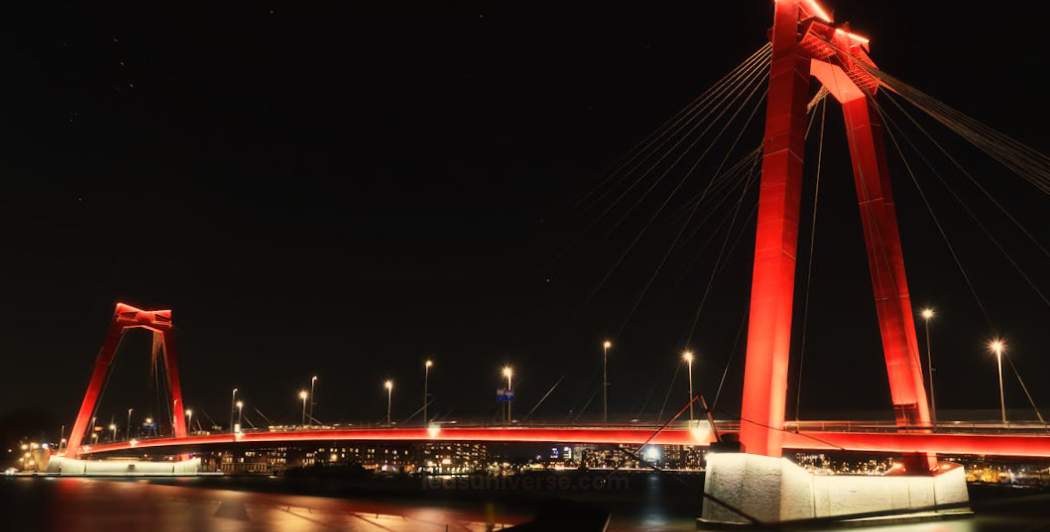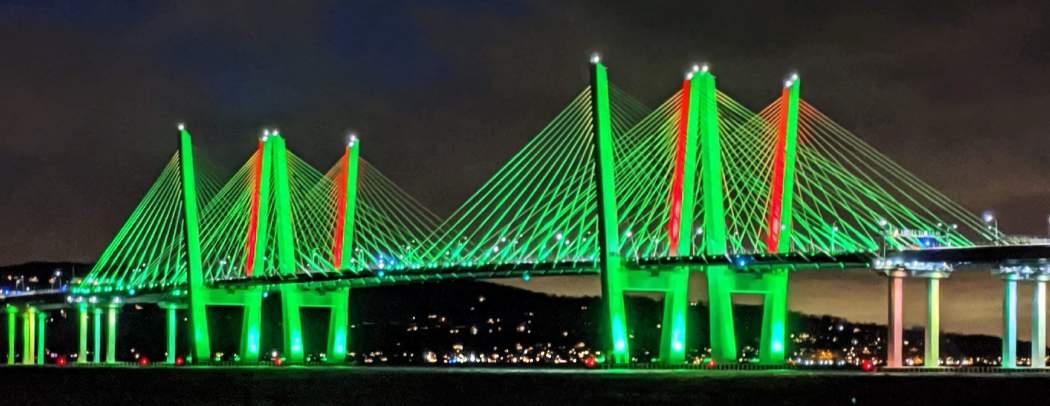Imagine a bridge that not only connects two points but also dazzles with a breathtaking display of light and color. Bridge lighting is more than a necessity—it’s an art form that transforms these structures into iconic landmarks, turning them into radiant symbols of innovation and beauty as night falls.
Advances in lighting technology have transformed how bridges are illuminated, leading to innovative solutions that enhance both their functionality and appearance. The latest developments in bridge lighting, including design considerations, technological advancements, and aesthetic impacts, are mentioned.
Reach out for free lighting consultation
Table of Contents
Toggle
The design of bridge lighting is a harmonious blend of technological innovation and architectural aesthetics. Modern bridge lighting systems leverage advancements in LED technology, which offer numerous advantages over traditional lighting sources. LEDs are not only energy-efficient but also provide exceptional brightness and color control, allowing for a wide range of lighting effects. This adaptability makes LEDs ideal for highlighting architectural elements and creating dynamic visual experiences.
Another innovative aspect of bridge lighting design is the integration of smart lighting systems. These systems can be controlled remotely, allowing for real-time adjustments based on factors such as traffic conditions, weather, and time of day. Smart lighting can enhance safety by providing increased visibility when needed and dimming or changing color to reduce light pollution or align with special events. This level of control ensures that bridge lighting is both functional and responsive to changing conditions.
Sustainability is a key consideration in modern bridge lighting design. The use of energy-efficient LEDs contributes to reduced power consumption and lower greenhouse gas emissions. Additionally, advancements in solar-powered lighting and energy storage systems are becoming more prevalent. Solar-powered lights, coupled with battery storage, can provide illumination without relying on the grid, further reducing the environmental impact.
Another sustainable practice involves the use of light pollution control measures. Effective bridge lighting design incorporates shielding and directing light to minimize its impact on surrounding environments. By focusing light where it is needed and avoiding unnecessary spill, designers can enhance the visual appeal of the bridge while preserving the natural nocturnal environment.
One of the primary goals of bridge lighting is to enhance the architectural features of the structure. Strategic placement of lights can accentuate the bridge’s unique design elements, such as arches, cables, and support towers. For instance, uplighting can create dramatic effects by highlighting the silhouette of the bridge against the night sky, while downlighting can illuminate the structure’s surface, revealing intricate details and textures.
The choice of lighting color and intensity also plays a crucial role in shaping the bridge’s appearance. Color-changing LEDs allow for versatility in creating various moods and themes, from vibrant and festive to calm and serene. Seasonal or event-based color schemes can be programmed to celebrate holidays, commemorate special occasions, or align with city-wide light festivals.

Effective bridge lighting not only highlights the structure but also contributes to the overall urban landscape. Bridges often serve as landmarks or focal points within a city, and their illumination can significantly impact the visual experience of both residents and visitors. By using lighting to create stunning visual displays, bridges can become iconic features of the cityscape, drawing attention and admiration.
The use of dynamic lighting effects, such as pulsating patterns or animated sequences, can further enhance the visual impact of the bridge. These effects can be synchronized with music or special events, creating an immersive experience that engages the public and transforms the bridge into a centerpiece of entertainment and culture.
Ensuring the longevity and reliability of bridge lighting systems is essential for maintaining their functionality and appearance. Bridges are exposed to various environmental conditions, including extreme temperatures, humidity, and pollutants. As such, lighting fixtures must be designed to withstand these challenges and require minimal maintenance.
High-quality materials and construction techniques are crucial for durability. For instance, corrosion-resistant coatings and weatherproof enclosures can protect lighting components from harsh elements. Additionally, modular designs that allow for easy replacement of individual parts can simplify maintenance and reduce downtime.
Safety is a paramount concern in bridge lighting design. Proper illumination is essential for ensuring the safety of both pedestrians and motorists. The lighting system must provide adequate visibility to prevent accidents and facilitate safe navigation across the bridge. This includes addressing potential glare and ensuring uniform light distribution to avoid dark spots or overly bright areas.
Compliance with relevant lighting standards and regulations is also critical. Many regions have specific requirements for bridge lighting, including guidelines for light levels, glare control, and energy efficiency. Adhering to these standards helps ensure that the lighting system is both effective and compliant with local codes.
Bridge lighting can reflect the cultural and historical significance of a location, serving as a visual representation of local heritage and identity. Custom lighting designs that incorporate elements of cultural symbolism or historical references can enhance the bridge’s role as a cultural landmark. Collaborating with local artists and historians can result in lighting schemes that celebrate and preserve the cultural narratives of the community.
Special occasions or anniversaries can be marked with commemorative lighting displays. By adjusting the lighting scheme to reflect specific themes or events, the bridge becomes a focal point for celebration and remembrance. This approach not only enhances the bridge’s visibility but also strengthens its connection to the community and its historical context.
The ongoing evolution of LED technology continues to drive innovation in bridge lighting. Future developments are expected to further enhance the efficiency, performance, and versatility of LED systems. This includes improvements in color rendering, dimming capabilities, and integration with emerging technologies such as IoT and artificial intelligence.
For instance, adaptive lighting systems that adjust based on real-time data could become more prevalent. These systems could use sensors to monitor environmental conditions and traffic patterns, automatically adjusting the lighting to optimize safety and energy use. Additionally, advancements in smart control systems may enable more sophisticated and interactive lighting experiences.
The concept of smart cities is influencing the future of bridge lighting, as more cities integrate technology into their infrastructure to improve efficiency and livability. Bridge lighting systems are increasingly being designed to interact with other smart city components, such as traffic management systems, environmental sensors, and communication networks.
This integration allows for more cohesive and responsive urban lighting strategies. For example, bridge lights could synchronize with streetlights and traffic signals to enhance overall traffic flow and safety. Additionally, data collected from bridge lighting systems could contribute to broader smart city analytics, providing insights into urban lighting patterns and environmental impact.
The initial cost of installing advanced bridge lighting systems can be substantial, but the long-term benefits often outweigh these expenses. Energy-efficient LED lighting reduces ongoing operational costs through lower energy consumption and reduced maintenance needs. Additionally, the positive impact on property values and the potential to attract tourism can provide a significant return on investment. Effective bridge lighting can enhance the aesthetic appeal of surrounding areas, contributing to economic growth and revitalization.
Planning for future upgrades and technological advancements is essential when designing bridge lighting systems. As technology evolves, new lighting solutions and control systems become available, offering improved performance and efficiency. Allocating a portion of the budget for future upgrades ensures that the bridge remains at the forefront of innovation and continues to benefit from the latest advancements in lighting technology. This proactive approach helps maintain the bridge’s aesthetic and functional value over time.
Bridge lighting represents a blend of art and engineering, enhancing both the functionality and aesthetics of these crucial structures. As technology advances and cities evolve, the design and implementation of bridge lighting continue to push boundaries, incorporating innovative solutions and sustainable practices. By balancing practical considerations with aesthetic goals, bridge lighting not only illuminates but also transforms urban landscapes, creating landmarks that shine brightly in both form and function.